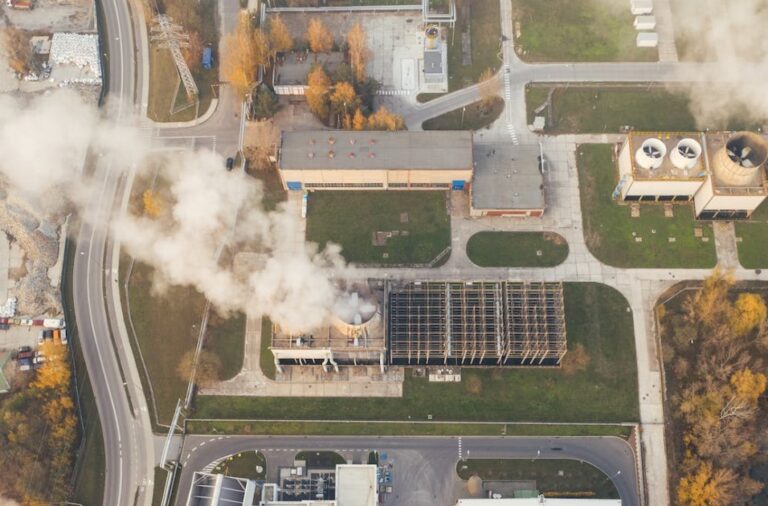Natural resources, especially fossil fuels and oils, are not abundant enough to meet the requirements of human beings. Coal is the most consumed fossil fuel to produce energy. In fact, only 133 years of coal reserve is left in the world. Clean coal is hence very necessary to save the environment.
Burning coal emits sulfur dioxide (SO2) that, in turn, causes phenomena like acid rain and many respiratory diseases. So, it is high time that people understand about clean coal and act accordingly before it’s too late.
Table of Contents
What is clean coal
Clean coal, commonly referred to as coal pollution mitigation, is a series that includes systems and technologies seeking to diminish coal burning’s health and environmental impact. Sulfur dioxide (SO2), nitrogen oxide (NOx), mercury leads, and carbon dioxide (CO2) are very harmful byproducts of burning coal to produce energy.
These harmful substances cause acid rain and contribute to greenhouse gas emissions. Avoiding such disasters is only possible by practicing clean coal. The major methods include electrostatic precipitators, flue-gas desulfurization, selective catalytic reduction, fly ash etc.
The primary motive of this coal mitigation is to reduce the harmful impact of coal combustion on human health and nature.
Read more: Europe, new milestone on renewables: solar power outperforms coal
Top clean coal technologies to be aware of
Certain technologies exclusively deal with clean coal. These technologies play a major role in minimizing the harmful effects of coal combustion. Let’s explore them in detail.
- Digitization: Even if digitization is not a direct coal mitigation technology, it greatly boosts the efficiency of coal plants. Digital technology comes into play during coal mining, to automate and optimize coal production, etc. This helps immensely in minimizing coal’s harmful impact on our environment;
- Carbon capture and storage (CCS): Captivating carbon from coal combustion is the main motive of this technology. Also, it keeps the same carbon in underground geological formations. This deteriorates the greenhouse emissions that the fossil fuels cause;
- Wet scrubbers: Wet scrubbers are used to sweep away sulfur dioxide (SO2) from the gas generated by coal. This technique cuts down the impact of coal burning on the environment;
- Utilization of bottom ash and fly ash: Both bottom ash and fly ash have the exact same components like silicon dioxide (SiO2), calcium oxide (CaO), aluminum oxide (Al2O3), and ferric oxide (Fe2O3). This composition in both fly and bottom ash helps in providing thermal stability. That’s why fly and bottom ash are used in building materials;
- Integrated Gasification Combined Cycle systems (IGCC): The Integrated Gasification Combined Cycle systems (IGCC) is the best coal mitigation technology in existence. This technology removes sulfur, nitrogen compounds, and particulates from coal combustion. No doubt, this is called the most clean and efficient technology of clean coal.
The advantages of using clean coal
Using clean coal has a number of benefits. Along with reducing the harmful effects of coal combustion, it has some other advantages over the usual coal burning, too. Let’s point them out one by one.
- As compared to all other sources of energy, the technology of clean coal is quite low-cost. It doesn’t require a lot of financial investment and hence is a wise choice;
- This advanced coal technology also reduces the emission of harmful greenhouse gasses. That, in turn, keeps the atmosphere clean and maintains the stability of the Earth’s average temperature;
- Clean coal technology is more likely to have a substantial existing infrastructure. Also, this methods are capable of providing a continuous supply of power and that too, with a high load factor;
- When this coal mitigation technologies will be in the developing stage and also when they will be implemented, a lot of job vacancies will come into the picture. This will boost the employment rate, and its positive effect will become visible on the economy of a country;
- It can be given better, cleaner forms like gas or liquid for easy burning processes.
Disadvantages of using clean coal
Besides having so many advantages, clean coal has some drawbacks. Being aware of them is equally important. So, let’s study about its disadvantages too.
- First of all, coal is not a never-ending resource. There is a scarcity of fossil fuels, and it’s not wise to recklessly use coal for human needs. Clean coal may be better than normal coal combustion, but it still uses coal, and sooner or later, coal will go extinct at this rate;
- Even though comparatively less, clean coal still emits carbon dioxide, sulfur oxide, etc. These components are bad news for the atmosphere and for human beings;
- Finally, there is no guarantee for how long advanced coal technologies will hold the huge amount of carbon. If, by any chance, the stored carbon leaks out, it will cause havoc in the world. People will fall ill or die needlessly.
So, this was all about clean coal and its benefits as well as drawbacks. Clean coal technology is not yet completely ripe and hence needs improvement. With the help of advanced scientific experiments, the chances are pretty positive, though.
Read more: Global coal and gas prices reach record highs: here’s why












